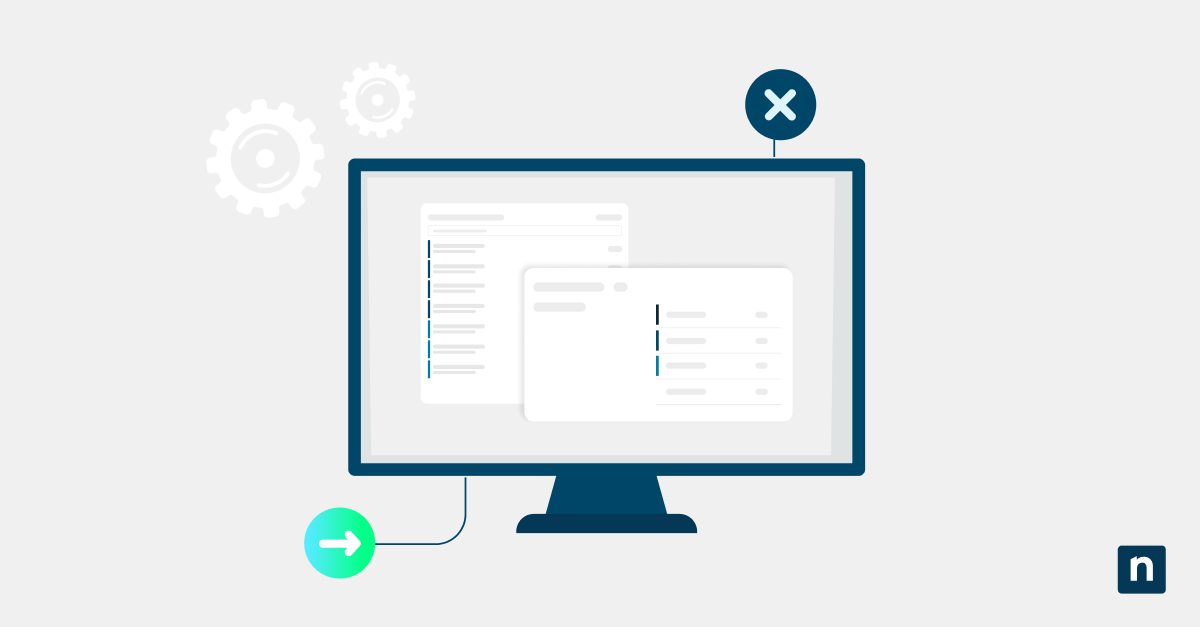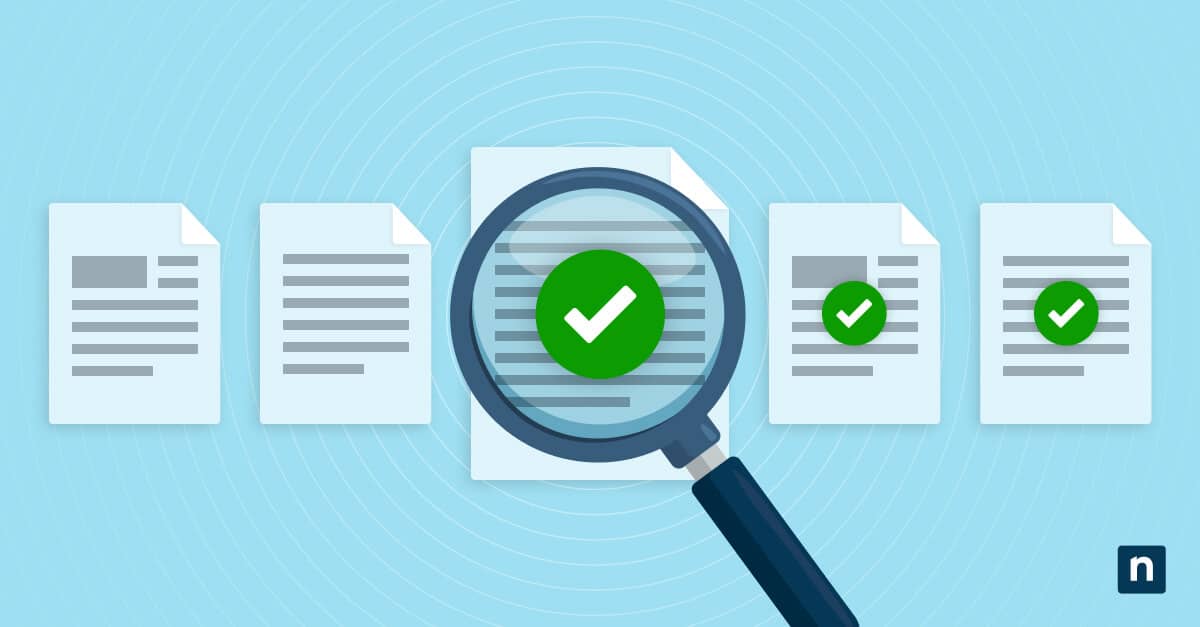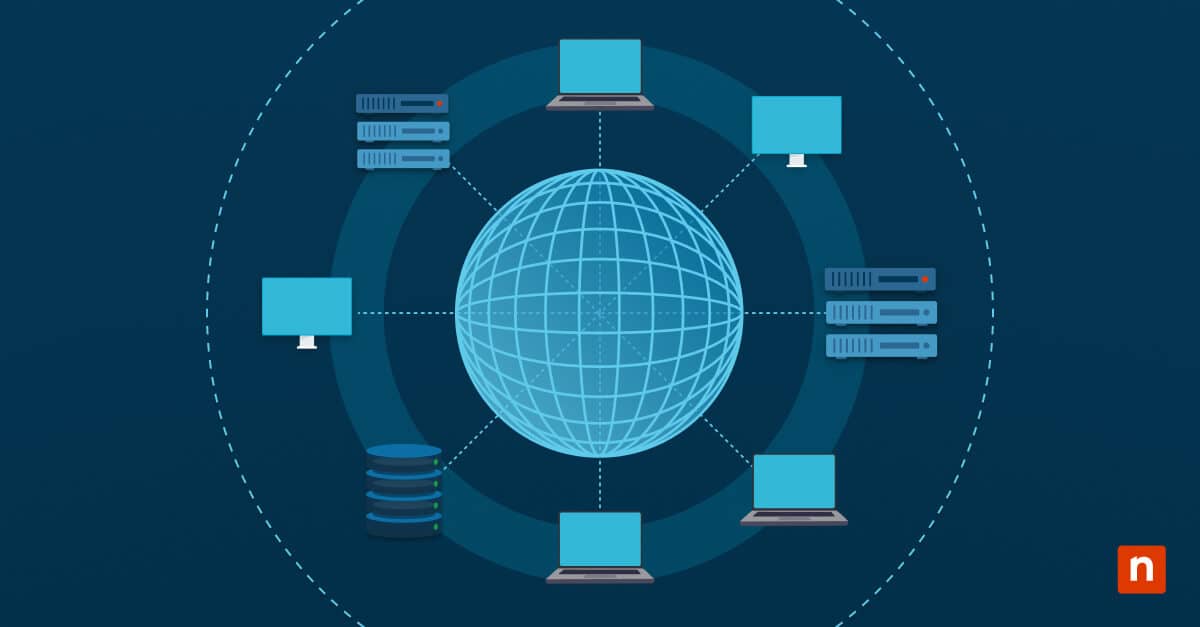Key Points
A firewall is a network security tool that filters traffic based on predefined rules to block malicious activity and protect data.
- Deploy firewalls to filter both inbound and outbound traffic using organization-defined rules
- Choose firewall types (e.g., proxy, NGFW, SPI) based on network needs, resources, and security requirements
- Use Network Address Translation (NAT) in firewalls to obscure internal IP addresses and reduce attack surfaces
- Integrate firewalls with VPNs and antivirus tools like NinjaOne to enhance security and privacy
Your organization relies on network and endpoint security to handle, store, and protect data. A complete security plan includes antivirus software, access management, zero-trust policies, and endpoint security tools. A firewall is one of your most critical components.
A firewall is a primary defense against malware and attacks. It performs several functions to protect networks and data. Choosing the right firewall can be difficult due to the many available types and compatible monitoring tools. However, if you use the cloud for data storage or application hosting, a firewall is essential to your network security.
For a visual walkthrough of the key concepts covered in this blog, watch our video: What is a Firewall?.
What is a firewall?
A firewall is a network traffic filtration device that detects and blocks unusual or likely malicious traffic while still allowing normal traffic to access your website or applications. It bases this filtration on protocols and rules set by your organization, and its protection insulates your internal network from the rest of the internet. Many firewalls are scalable, and they use network address translation (NAT) to map your internal IP address to a shared web-facing address.
The primary purpose of a firewall is to act as an initial line of defense against attackers. While it cannot act as a complete network security solution on its own, the firewall is a necessary component. Its ability to quickly react and filter out malicious traffic makes it essential to reducing the risk of a successful infiltration, and because filters are also active for outgoing traffic, a firewall can prevent sensitive information from leaving your environment.
Minimze IT complexity with a unified IT management and endpoint security solution.
→ Learn how NinjaOne can solidify your Enterprise IT foundation
Why do organizations need a firewall?
A proactive security strategy is more efficient than relying on recovery after an incident. Downtime and recovery typically consume more time and resources than prevention. Firewalls are key prevention tools. Combined with network monitoring and management, they help block cyberattacks, data leaks, and unauthorized access.
Firewalls limit internal network traffic to protect resources, data, and assets. If an attacker bypasses other security measures, the firewall can still intercept data exfiltration attempts. It flags and blocks suspicious activity to reduce the risk of data theft or leaks.
Although firewalls can be expensive, a data leak or ransomware attack will cost significantly more, and the resulting reputation damage, sales decline, or potential litigation will do your organization no favors. By implementing firewalls, you can thwart basic attacks on your network without compromising the time you have to tackle other projects.
Types of firewalls
Firewalls are important for creating a secure network, and there are many different types of firewalls that have varying applications. Generally, firewalls filter packets and translate network or port addresses while working with VPNs, but each type has additional features, as well as some pros and cons.
Application-level gateways (proxy firewalls)
A proxy firewall mediates between your internal network and the rest of the internet by analyzing traffic from a unique IP address. Having its own IP address means that the proxy firewall can prevent the two networks from contacting each other, and this isolation is a disadvantage for attackers. Proxy firewalls are able to analyze incoming requests and data with high levels of detail due to operating at the application level, and they are the most secure and private firewalls. However, they sometimes have compatibility and latency issues.
Next-generation firewalls (NGFW)
This firewall deals with both traditional threats and more advanced malware through additional, sophisticated filtering. In addition to standard firewall filtering capabilities, NGFWs check packet payloads for recognizable malware, and they come with built-in ransomware and anti-virus protection to further bolster your security. The NGFW has far more features than a traditional firewall, but they also require more system resources and can slow down machines.
Stateful packet inspection (SPI) firewalls
SPI firewalls check the content of packets and determine whether it corresponds to existing traffic. If not, the packet is blocked. The security provided by dynamic SPI firewalls is much tighter than more static options, and there is more information available to security teams. However, SPI firewalls do not work at the application level, and they often are expensive and can slow down network connections.
Stateless vs stateful firewalls
Stateful firewalls dynamically filter traffic based on connection activity. They use both context and rule-based filtering, which reduces false positives and allows legitimate users better access. Their flexible design captures more nuances, but the complexity of their configurations can introduce errors and vulnerabilities.
Large organizations benefit from stateful firewalls due to their detailed tracking and packet-level connection data. Their higher cost is manageable for companies with greater resources.
Stateless firewalls rely on fixed criteria such as source and destination to evaluate traffic. They operate faster and require fewer resources due to simpler configurations. These firewalls are well-suited for organizations that need high-speed networks. Smaller businesses can also benefit from their lower traffic volumes and affordability.
Fortify your IT stack with integrated security and real-time monitoring.
Firewalls and network security
Organizations can reduce their attack surface by using Network Address Translation (NAT) in firewall configurations. NAT hides private IP addresses by mapping them to a public IP address, preventing exposure of internal servers and clients. This limits external visibility and lowers the risk of unauthorized network access.
Especially for organizations whose employees work remotely, NAT is a valuable tool for hiding your private network from the rest of the internet. However, it is not the only way to improve privacy. A Virtual Private Network (VPN) creates a private network connection that allows users to hide their IP addresses. VPN servers receive information before the user’s device, and then the information is encrypted before it reaches the user. Both of these network security tools can be used with firewalls to further bolster your organization’s security and privacy online.
Using NinjaOne to integrate firewall and antivirus solutions
Whatever firewall option you choose, it’s best to integrate it with other security measures, such as antivirus protection. The NinjaOne antivirus integration works with the Bitdefender firewall solution, and this is an easy way to implement protective measures in your organization.
To round out your suite of security tools, you should also consider using a virtual private network (VPN). As a rule, most modern firewalls are compatible with VPNs, and using the two in concert can significantly improve your organization’s security and privacy. Ultimately, it’s important that you balance network speed needs, the size of your organization, and the amount of detail about traffic that you need to see. By considering all of these factors, you will be able to choose the best firewall for your environment and integrations.








